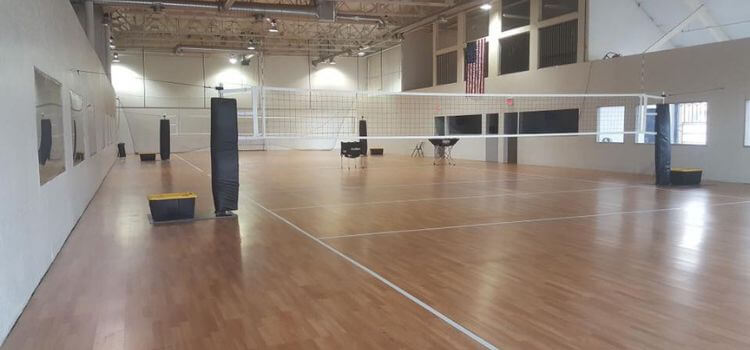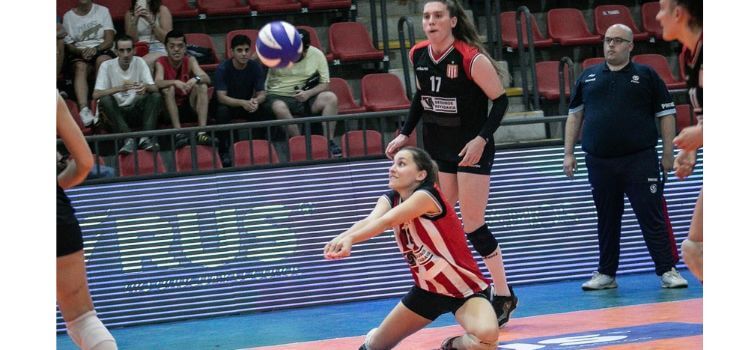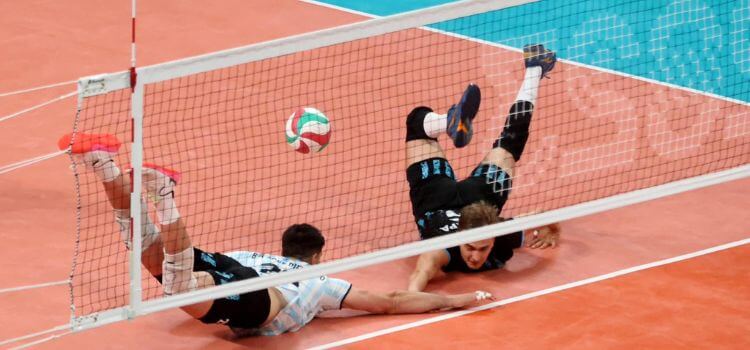As an Amazon Associate, I earn from qualifying purchases
Portable volleyball court flooring has revolutionized the way volleyball is played and organized. With its flexibility, ease of installation, and cost-effectiveness, portable solutions have become a cornerstone in sports infrastructure.
This article delves into the intricacies of portable volleyball court flooring, exploring its advantages, types, factors to consider when choosing, installation and maintenance processes, successful applications through case studies, environmental considerations, and future trends.
Introduction to Portable Volleyball Court Flooring
Portable volleyball court flooring refers to modular or roll-out systems designed to provide a stable and safe playing surface for volleyball matches and practices.
Unlike traditional permanent courts, portable flooring offers the advantage of mobility, allowing for easy setup and dismantling as needed.
This flexibility has made it an indispensable asset for various organizations, including schools, sports clubs, event organizers, and recreational facilities.
Advantages of Portable Volleyball Court Flooring
Portable volleyball court flooring presents several advantages that contribute to its widespread adoption:
Flexibility and Versatility: Portable flooring can be set up in different locations, both indoor and outdoor, accommodating various event requirements and space constraints.
Easy Installation and Dismantling: Unlike permanent courts, which require extensive construction work, portable flooring can be quickly assembled and disassembled, saving time and labor costs.
Cost-effectiveness: Portable solutions offer a more economical alternative to permanent courts, particularly for organizations with limited budgets or those hosting temporary events.
Customization: Portable flooring systems come in various sizes and configurations, allowing organizers to tailor the court layout according to specific needs and preferences.
Types of Portable Volleyball Court Flooring
There are two primary types of portable volleyball court flooring:
Interlocking Tile Systems:
Interlocking tile systems consist of modular tiles that fit together to create a seamless playing surface. These tiles are typically made from durable materials such as polypropylene or PVC, providing excellent shock absorption and traction for players.
Popular brands like Sport Court and SnapSports offer a range of interlocking tile options designed specifically for volleyball courts. Installation involves laying out the tiles according to the desired court dimensions and connecting them securely using interlocking mechanisms.
Maintenance is relatively straightforward, requiring regular cleaning to remove dirt and debris, with occasional replacement of damaged tiles.
Roll-out Court Flooring:
Roll-out court flooring consists of flexible mats or rolls made from materials like rubber or vinyl. These rolls are laid out over a flat surface to create an instant volleyball court, with no assembly required.
Roll-out flooring offers excellent durability and impact resistance, making it suitable for both indoor and outdoor use. Brands such as Flex Court and Mateflex offer roll-out flooring solutions designed to withstand heavy use and harsh weather conditions. Installation simply involves rolling out the mats and securing them in place using adhesive or anchoring systems.
Maintenance typically involves periodic cleaning to remove dirt and stains, with occasional repairs for damaged sections.
Factors to Consider When Choosing Portable Volleyball Court Flooring
Several factors should be taken into account when selecting portable volleyball court flooring:
Material Quality:
The quality of the materials used in the flooring system directly impacts its performance and durability. High-quality materials offer better shock absorption, traction, and resistance to wear and tear, ensuring a safe and reliable playing surface for athletes.
Surface Texture:
The texture of the playing surface affects gameplay and player comfort. A smooth surface with adequate traction helps prevent slips and falls, while also enhancing ball control and maneuverability during matches.
Portability:
The ease of transportation and storage is crucial for portable flooring systems. Lightweight and compact designs facilitate hassle-free setup and dismantling, making them ideal for events and venues with limited space or resources.
Budget:
Cost considerations play a significant role in the selection process. Organizers must weigh the upfront investment against the long-term benefits and durability of the flooring system. While budget-friendly options may offer initial savings, higher-quality solutions often provide better performance and longevity in the long run.
Installation and Maintenance of Portable Volleyball Court Flooring
Proper installation and maintenance are essential for ensuring the longevity and performance of portable volleyball court flooring:
Pre-installation Preparation:
Before installing the flooring system, it’s essential to inspect the surface for any irregularities or debris that could affect the playing surface. Thorough cleaning
Installation Process:
The installation process varies depending on the type of portable volleyball court flooring being used:
For interlocking tile systems, start by laying out the tiles according to the desired court dimensions, ensuring proper alignment and spacing between each tile.
Connect the tiles securely using the interlocking mechanisms provided, ensuring a tight and seamless fit. Once the entire court is assembled, double-check the alignment and stability of the tiles before use.
For roll-out court flooring, simply roll out the mats or rolls over the prepared surface, ensuring they are flat and free from wrinkles or creases. Use adhesive or anchoring systems to secure the edges and corners of the flooring, preventing them from shifting during play.
Maintenance Practices:
To keep portable volleyball court flooring in optimal condition, regular maintenance is essential:
Implement a regular cleaning routine to remove dirt, debris, and stains from the surface of the flooring. Use a mild detergent and water solution to scrub away any stubborn stains, avoiding harsh chemicals that could damage the materials.
Inspect the flooring periodically for signs of wear and tear, such as cracks, tears, or loose tiles. Repair any damaged sections promptly to prevent further deterioration and ensure the safety of players.
During offseason or periods of non-use, take appropriate measures to store the flooring properly. Roll up roll-out flooring and store it in a dry, climate-controlled environment to prevent moisture damage and prolong its lifespan.
Disassemble interlocking tile systems and store them in a designated area, keeping them organized and protected from damage.
Case Studies: Successful Applications of Portable Volleyball Court Flooring
Portable volleyball court flooring has been successfully utilized in various settings, including:
Outdoor Events and Tournaments:
Portable flooring is often used for outdoor volleyball events and tournaments, providing a reliable playing surface that can withstand the rigors of outdoor conditions.
Events such as beach volleyball tournaments, community festivals, and corporate team-building activities benefit from the flexibility and convenience of portable flooring, allowing organizers to set up temporary courts in parks, parking lots, or beachfront locations.
Temporary Sports Facilities:
Schools, parks, and recreational centers often use portable volleyball court flooring to create temporary sports facilities for practices, games, and events.
These facilities offer a cost-effective solution for organizations with limited space or budget constraints, allowing them to maximize the utility of existing spaces without the need for permanent construction.
Portable flooring can be quickly installed and removed as needed, accommodating a variety of indoor and outdoor activities throughout the year.
Environmental Considerations in Portable Volleyball Court Flooring
As sustainability becomes increasingly important in the sports industry, there is growing interest in eco-friendly alternatives for portable volleyball court flooring:
Sustainability of Materials:
Manufacturers are exploring sustainable materials such as recycled rubber, bamboo, and cork for use in portable flooring systems. These materials offer comparable performance to traditional options while reducing environmental impact and promoting resource conservation.
Carbon Footprint:
Compared to permanent court construction, portable volleyball court flooring generally has a lower carbon footprint due to reduced material usage and construction waste. Additionally, the modular nature of portable flooring allows for efficient transportation and storage, further minimizing environmental impact throughout the product lifecycle.
Future Trends and Innovations in Portable Volleyball Court Flooring
The future of portable volleyball court flooring is ripe with innovation and technological advancements:
Technological Advancements:
Emerging technologies such as embedded sensors and LED lighting are being integrated into portable flooring systems to enhance performance and user experience. These features enable real-time performance tracking, interactive gameplay, and customizable lighting effects, adding a new dimension to the sport of volleyball.
Materials Development:
Research and development efforts are focused on improving the durability, shock absorption, and sustainability of portable flooring materials. Advanced composite materials and manufacturing techniques are being utilized to create lightweight yet robust flooring systems that can withstand heavy use and environmental exposure.
Conclusion
Portable volleyball court flooring offers a versatile and practical solution for organizations and individuals seeking to create temporary or mobile volleyball courts.
With its flexibility, durability, and ease of installation, portable flooring systems have become indispensable assets for events, facilities, and recreational spaces around the world.
By considering factors such as material quality, surface texture, and environmental impact, stakeholders can make informed decisions when selecting portable volleyball court flooring that meets their specific needs and priorities.
FAQs (Frequently Asked Questions) about Portable Volleyball Court Flooring:
What is portable volleyball court flooring?
Portable volleyball court flooring is a specialized surface designed to create a temporary or movable playing area for volleyball matches. It typically consists of interlocking tiles or modular panels that can be easily assembled and disassembled.
How does portable volleyball court flooring differ from traditional court surfaces?
Portable volleyball court flooring differs from traditional court surfaces in its portability and ease of installation. Unlike permanent court surfaces such as hardwood or concrete, portable flooring can be set up and removed quickly, making it suitable for temporary events or locations without dedicated volleyball facilities.
What materials are portable volleyball court flooring made of?
Portable volleyball court flooring is often made of durable materials such as polypropylene, PVC, or high-density polyethylene (HDPE). These materials provide stability, impact absorption, and resistance to wear and tear.
What are the benefits of portable volleyball court flooring?
Some benefits of portable volleyball court flooring include versatility, easy setup and removal, portability for indoor and outdoor use, shock absorption to reduce player fatigue and injury, and customizable options for color and design.
How is portable volleyball court flooring installed?
Portable volleyball court flooring typically features interlocking tiles or panels that are assembled like puzzle pieces. The tiles are laid out in the desired configuration, and the interlocking mechanism securely holds them in place without the need for adhesives or specialized tools.
Can portable volleyball court flooring be used for other sports?
Yes, portable volleyball court flooring can often be used for other sports and activities such as basketball, badminton, futsal, or indoor soccer. Some designs may include line markings for multiple sports, allowing for easy adaptation to different activities.



